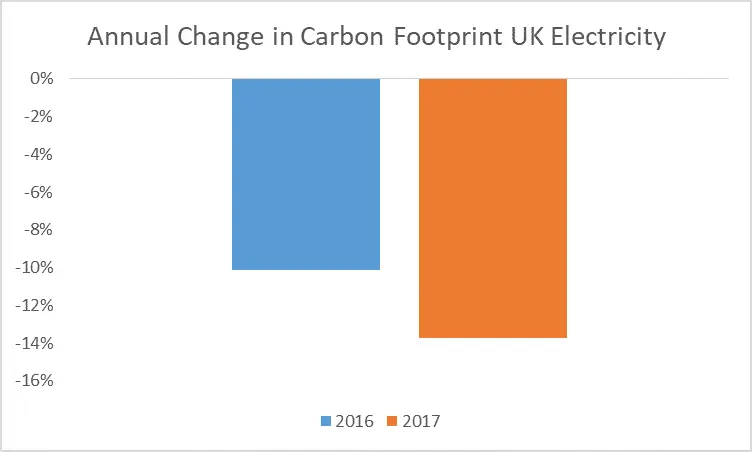Carbon Footprint, Energy, News, Sustainability
Carbon Footprint of UK Electricity – Year on Year Change
Each year the UK government releases their greenhouse gas (GHG) emissions factors for company reporting. Within the carbon footprinting sector they are often know as Defra’s GHG emissions factors, despite now being produced by the Government department, BEIS (Department for Business, Energy and Industrial Strategy). They are an invaluable resource for carbon footprint professionals.
In August the latest factors where released. Each year it is interesting to see how the UK has progressed towards decarbonising the national electricity grid. Are the ambitious carbon reductions of UK electricity on track? Or is it yet more disappointment. The latest factors reveal the status quo.
UK’s Carbon Footprint of Electricity
Breakdown of UK’s Carbon Footprint of Electricity
- Electricity generation: These are the emissions directly at the power stations, e.g. from burning natural gas, coal, and other fossil fuels.
- Transmission and distribution (T&D): The losses in the transmission and distribution network.
- Well to tank (WTT) of generation: This is the fuel extraction, processing and transport emissions of the fuel consumed at power stations.
- Well to tank of transmission and distribution: This accounts for the fuel extraction, processing and transport emissions of the energy lost through the distribution network.
In the period of 1 year, the UK’s carbon footprint of a unit of electricity reduced by almost 14%, an impressive year on year reduction (2016 to 2017).
Likewise, the reduction from 2015 to 2016 was a 10% reduction in the carbon footprint of a unit of electricity. These are impressive reductions but ones that will be severely needed for the UK to meet their legally binding GHG emissions reduction target.
If you like this post please consider sharing it on social media using the buttons below or signing up to our newsletter.
Key Reference:
The UK’s GHG emission factors for company reporting 2017 can be downloaded at the Government’s website, https://www.gov.uk/government/publications/greenhouse-gas-reporting-conversion-factors-2017



